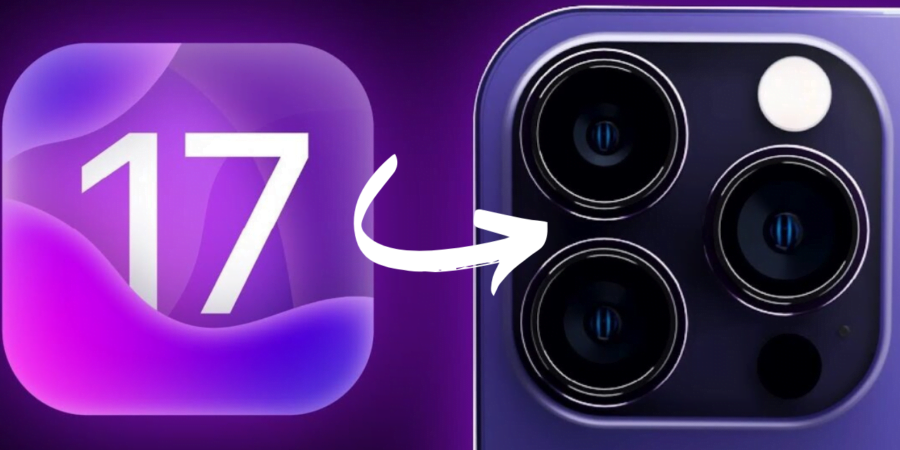During a special review event for journalists and media professionals in San Francisco held by Apple on January 9, 2007, then-CEO Steve Jobs announced for the first time the iOS operating system, while the The operating system for the first time on June 29 of the same year with the launch of the first generation of iPhone phones.
Since then, Apple has continued to develop and improve the operating system and regularly updates it to meet the needs of users and recent developments in technology, regularly releasing many different versions designed to improve the performance of smart devices and provide new features and improvements in security and privacy.
In designing this system, the company’s development team focused on it being innovative and user-friendly at the same time.
The new versions of the operating system have brought improvements in performance and security, and added new features such as Siri, Apple Pay, AirDrop, and others. The system also works across a wide range of smart devices, including the iPhone, iPad and iPod Touch.
iOS is the second most installed mobile operating system in the world after Android, and is the basis for three other operating systems made by Apple: iPadOS, tvOS, and WatchOS.
During this year, the company is preparing to announce the latest version of its operating system for mobile devices, iOS 17, which is still under development, and the preview version is supposed to be presented at the company’s annual conference for global developers “WWDC”. With the launch of the official version in September 2023.
* iOS 17 Overview
We still have time until the date of the disclosure of the “iOS 17” operating system on the fifth of next June, but information about it is still somewhat limited.
According to Bloomberg journalist Mark Gorman, the new version includes some of the most requested features that users want, so it may be more important than initially thought.
And when Apple began developing the “iOS 17” operating system, the initial thought was to call it a modified version, as it was intended to focus more on fixing errors and improving performance rather than adding new features, which makes it a less important update than previous updates due to The company’s heavy focus is on its long-awaited mixed reality headset and its operating system, xrOS.
But it seems that the company has changed strategy during the development process of the update, which means that it includes many useful features, even if it lacks improved support such as the updated lock screen that we saw in iOS 16.
And while Apple hardware products leak months before the date of their actual appearance, software leaks are less common, because most hardware leaks come from the company’s huge supply chain, and not from within Apple itself, as the company is able to reduce software leakage to a minimum because Few people inside Apple have actual knowledge of the company’s plans.
* Support for mixed reality glasses
Apple’s mixed reality glasses work on their own, and they’re supposed to have their own app store, but there’s likely to be some level of integration between the glasses and the iPhone.
All the company’s products interact with each other in different ways, so new features related to the glasses are expected in iOS 17.
* Control Center
Currently, Control Center can be accessed by swiping down from the top right of the iPhone screen. The Control Center allows quick access to settings for things like wireless and Airplane mode, as well as the Now Playing interface, and you can customize the tiles at the bottom to include your most-used settings.
iOS 17 may feature major changes in the built-in Control Center, as the updated Control Center is expected to be one of the most notable changes in the iOS 17 operating system, but there is still no information on the specific changes that are being made. It is noteworthy that the Control Center has not seen a noticeable update since the launch of “iOS 11” in 2017.
* CarPlay updates
At its Worldwide Developers Conference 2022, Apple previewed a new CarPlay experience that features deeper integration with vehicles, allowing control of vehicle functions such as audio and radio. Apple also plans to add widgets and support for multiple screens. The first vehicles with next-generation CarPlay integration are slated to come in late 2023, which means support will likely be built into iOS 17.
* Support for sideloading and alternative app stores
European legislation requires Apple to allow sideloading, which allows customers to download apps without using the App Store, starting in 2024, and the company plans to make changes starting with iOS 17. Apple will be forced to allow people to use alternative app stores.
Developers will not need to pay Apple’s 15% to 30% fee for apps that customers install using alternative means, but Apple still plans to charge a fee.
Sideloading changes are initially limited to customers in the European Union, and as other countries pass legislation similar to the Digital Markets Act in Europe, Apple could expand the functionality.
Major changes that need to be made to implement sideloading support in development may affect iOS 17 due to the engineering resources required.
* External browsers without WebKit
Besides allowing third-party app stores, in iOS 17 Apple could allow third-party browsers to use its engines by removing the WebKit requirement.
Currently, external browsers, such as Chrome and Firefox, must be built using WebKit, the open source browser engine from Apple, on iOS devices, according to Apple’s rules, but the law of digital markets in Europe prevents the company from forcing browsers to use WebKit.
The company can only make these changes in Europe, and it is not yet clear whether WebKit requirements will be removed worldwide or only browser applications developed for use in Europe.
* Trial version limitations
With the release of “iPadOS 16.4” and (iPadOS 16.4), Apple changed the way you install developer versions and public betas on iPhone and iPad. The accounts are no longer used to install updates. Instead, the company requires an Apple ID associated with either a developer account or an account registered in the public beta. This step prevents non-developers from being able to install the iOS 17 beta through a shared developer account, as each installation is authenticated through the Apple ID associated with the developer account.
* Active widgets
When Apple launched iOS 14, one of the main features was the ability to add widgets to the home screen. Apple is now testing active widgets for the Home screen and Today view across iPhone. If implemented, active widgets can include one-click buttons, sliders, and more, with the goal of making widgets more dynamic and interactive, so they don’t just display information or allow you to click into an app.
* Improved search and spotlight
New versions of iOS often come with improvements to search and the Spotlight feature, and iOS 17 is no exception. It is expected that the company will focus on the area of search within the application, such as the search function for the Settings application, as the Settings application often does not provide reliable results for the required setting. Search improvements may be made to locate text in images and videos and to allow users to search for specific topics in images.
* Performance and stability
Improving performance, efficiency, and stability are major goals of the iOS 17 update. Apple is also working on long-term support for older devices. Early betas may be unstable across some devices with 3GB of RAM, but Apple is expected to significantly improve stability over the course of beta testing.
* Dynamic Island
Apple introduced the “Dynamic Island” feature with the “iPhone 14 Pro” and “iPhone 14 Pro Max”, which is the part located in the middle of the phone screen from the top, in which some icons appear . It is expected that all models of the “iPhone 15” lineup for this year will feature the “Dynamic Island” feature.
As a result, Apple is improving Dynamic Island so much it can do. The company’s marketing department is pressing the development team to add more functionality to Dynamic Island, because all iPhone 15 models support the feature when it’s launched.
Currently, Dynamic Island can show alarms, sports scores, incoming phone calls, low battery alerts, Apple Pay confirmations, charging status, and map directions, but it’s still limited, especially for third-party apps.
Siri’s on-screen interface can be integrated into Dynamic Island, making its Siri pop-up less cluttered.
Moving Siri to Dynamic Island allows content across the screen to remain in full view without Siri’s current circular interface.
* iOS 17 compatible devices
There is mixed information about the devices supported by the “iOS 17” update, as one suggestion indicates that it may abandon support for “iPhone X”, “iPhone 8” and “iPhone 8 Plus”, while other sources indicate that it works across all devices. Devices capable of running iOS 16.
* iOS 17 release date
It is assumed that the new operating system will be previewed at the Global Developers Conference on the fifth of next June, provided that the beta version will be available to developers for testing purposes after the conference.
And sometime next July, the public beta version will be released that all iPhone users can try.
After that, the official version of the operating system will be released to everyone sometime next September, most likely, along with the new iPhone 15 lineup.






Leave feedback about this